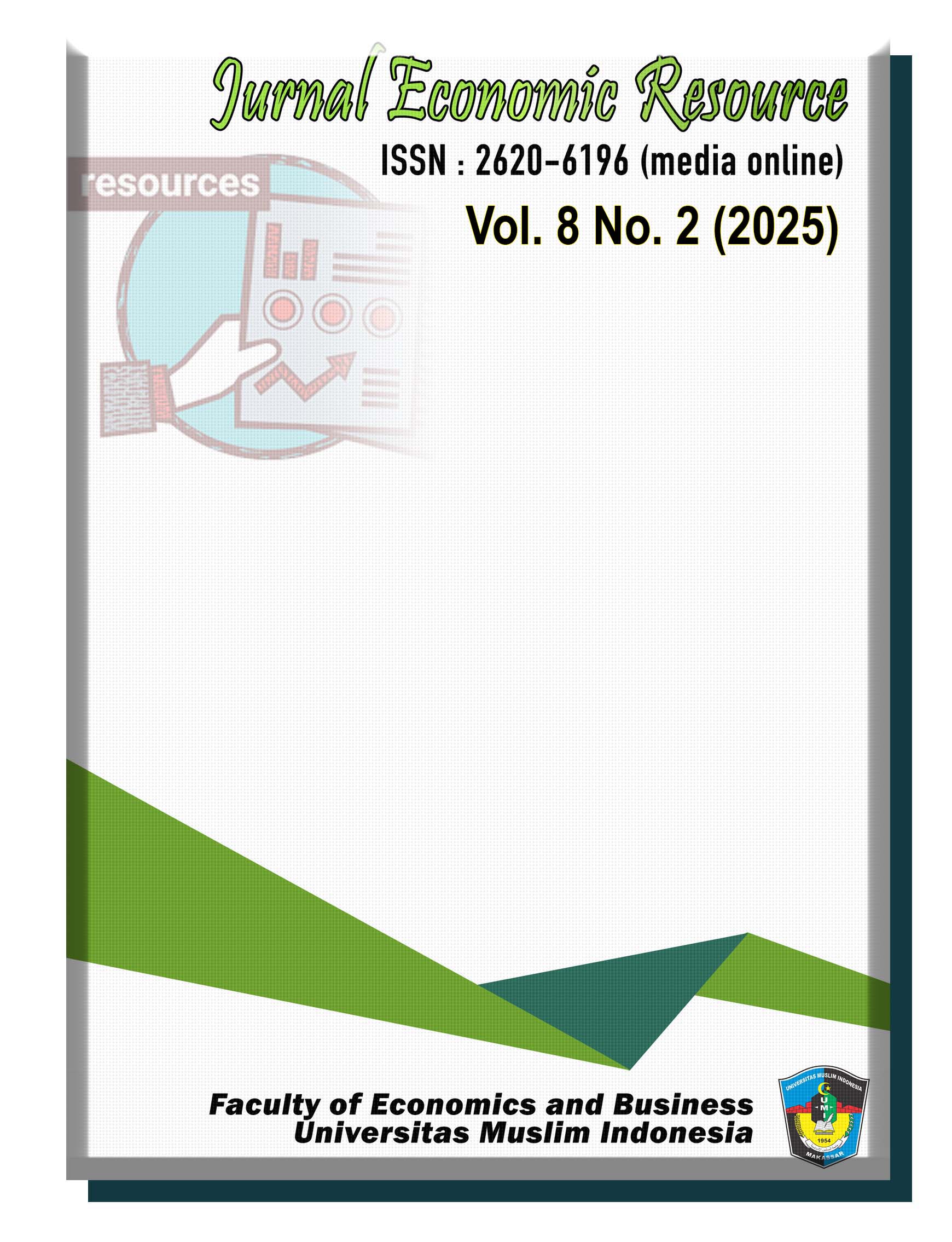Main Article Content
Abstract
Poverty has always been an interesting issue in every study, especially when it is related to education level and open unemployment. This study aims to analyse the effect of education level and open unemployment on poverty in Banten Province for the period 2019–2023. The data used is secondary quantitative time series data obtained from the Banten Province Central Statistics Agency (BPS) and the Ministry of Education and Culture of the Republic of Indonesia (Kemendikbud) for the period 2019–2023. The regression model used is the multiple linear regression analysis method. Based on the results of the study, the level of education partially (t-test) has a significant effect on poverty, with a t-count value greater than the t-table (3.134 > 271.2), and open unemployment partially (t-test) has a substantial impact on poverty with a t-count value greater than the t-table (2.155 < 271.2). However, simultaneously (F-test), these two variables together have a significant effect on poverty with a calculated F-value greater than the table F-value (55.114 > 3.25).
Keywords
Article Details
References
- Alderman, H., Behrman, J., & Glewwe, P. (2022). The Economics of Poverty Traps and Persistent Inequality. World Bank Publications.
- Central Statistics Agency (BPS). (2023). Indonesian Education Statistics. Jakarta: BPS.
- Central Statistics Agency (BPS). (2024). Indonesian Employment Situation February 2024. Jakarta: BPS.
- Ghozali, I. (2018). Application of Multivariate Analysis with IBM SPSS 25 Program. Semarang: Diponegoro University Publishing Agency.
- Gujarati, D. N., & Porter, D. C. (2009). Basic Econometrics (5th ed.). New York: McGraw-Hill.
- ILO. (2023). World Employment and Social Outlook: Trends 2023. Geneva: International Labour Organisation
- Ministry of Education, Culture, Research, and Technology. (2023). Higher Education Statistics 2023. Jakarta: Kemdikbudristek.
- OECD. (2020). Education at a Glance 2020: OECD Indicators. Paris: OECD Publishing.
- Sen, A. (1999). Development as Freedom. Oxford University Press
- Sugiyono. (2018). Quantitative, Qualitative, and R&D Research Methods. Bandung: Alfabeta.
- Sukirno, S. (2016). Macroeconomics: An Introduction. Jakarta: Raja Grafindo Persada
- Suryahadi, A., Al Izzati, R., & Suryadarma, D. (2021). Estimating the Impact of COVID-19 on Poverty in Indonesia. Bulletin of Indonesian Economic Studies, 57(2), 1–31.
- Todaro, M. P., & Smith, S. C. (2020). Economic Development (13th ed.). Pearson.
- UNDP. (2022). Human Development Report 2022: Uncertain Times, Unsettled Lives. New York: United Nations Development Programme.
- UNESCO. (2021). Global Education Monitoring Report 2021/22. Paris: UNESCO Publishing.
- World Bank. (2022). Indonesia Economic Prospects: Financial Deepening for Stronger Growth and Sustainable Recovery. Washington, DC: The World Bank.
References
Alderman, H., Behrman, J., & Glewwe, P. (2022). The Economics of Poverty Traps and Persistent Inequality. World Bank Publications.
Central Statistics Agency (BPS). (2023). Indonesian Education Statistics. Jakarta: BPS.
Central Statistics Agency (BPS). (2024). Indonesian Employment Situation February 2024. Jakarta: BPS.
Ghozali, I. (2018). Application of Multivariate Analysis with IBM SPSS 25 Program. Semarang: Diponegoro University Publishing Agency.
Gujarati, D. N., & Porter, D. C. (2009). Basic Econometrics (5th ed.). New York: McGraw-Hill.
ILO. (2023). World Employment and Social Outlook: Trends 2023. Geneva: International Labour Organisation
Ministry of Education, Culture, Research, and Technology. (2023). Higher Education Statistics 2023. Jakarta: Kemdikbudristek.
OECD. (2020). Education at a Glance 2020: OECD Indicators. Paris: OECD Publishing.
Sen, A. (1999). Development as Freedom. Oxford University Press
Sugiyono. (2018). Quantitative, Qualitative, and R&D Research Methods. Bandung: Alfabeta.
Sukirno, S. (2016). Macroeconomics: An Introduction. Jakarta: Raja Grafindo Persada
Suryahadi, A., Al Izzati, R., & Suryadarma, D. (2021). Estimating the Impact of COVID-19 on Poverty in Indonesia. Bulletin of Indonesian Economic Studies, 57(2), 1–31.
Todaro, M. P., & Smith, S. C. (2020). Economic Development (13th ed.). Pearson.
UNDP. (2022). Human Development Report 2022: Uncertain Times, Unsettled Lives. New York: United Nations Development Programme.
UNESCO. (2021). Global Education Monitoring Report 2021/22. Paris: UNESCO Publishing.
World Bank. (2022). Indonesia Economic Prospects: Financial Deepening for Stronger Growth and Sustainable Recovery. Washington, DC: The World Bank.

